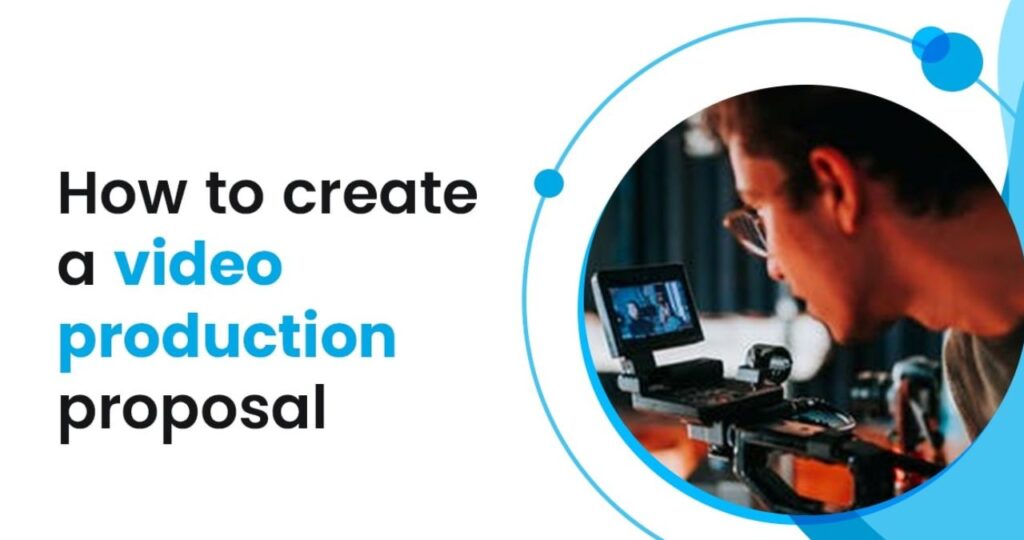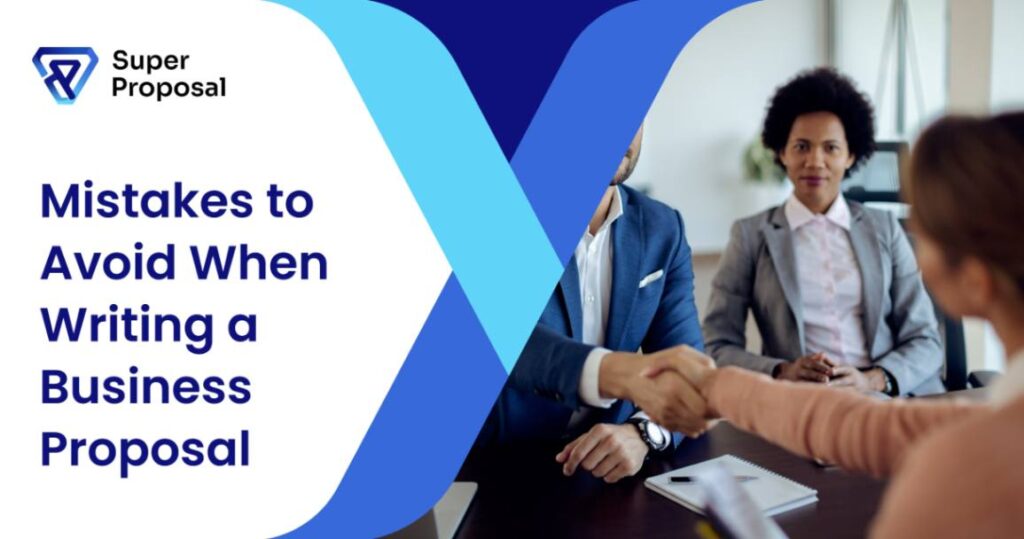How to Start a Business Proposal Introduction
AUG 21, 2024 | LAST UPDATED ON SEP 30, 2024 BY ANGELICA NAIDU
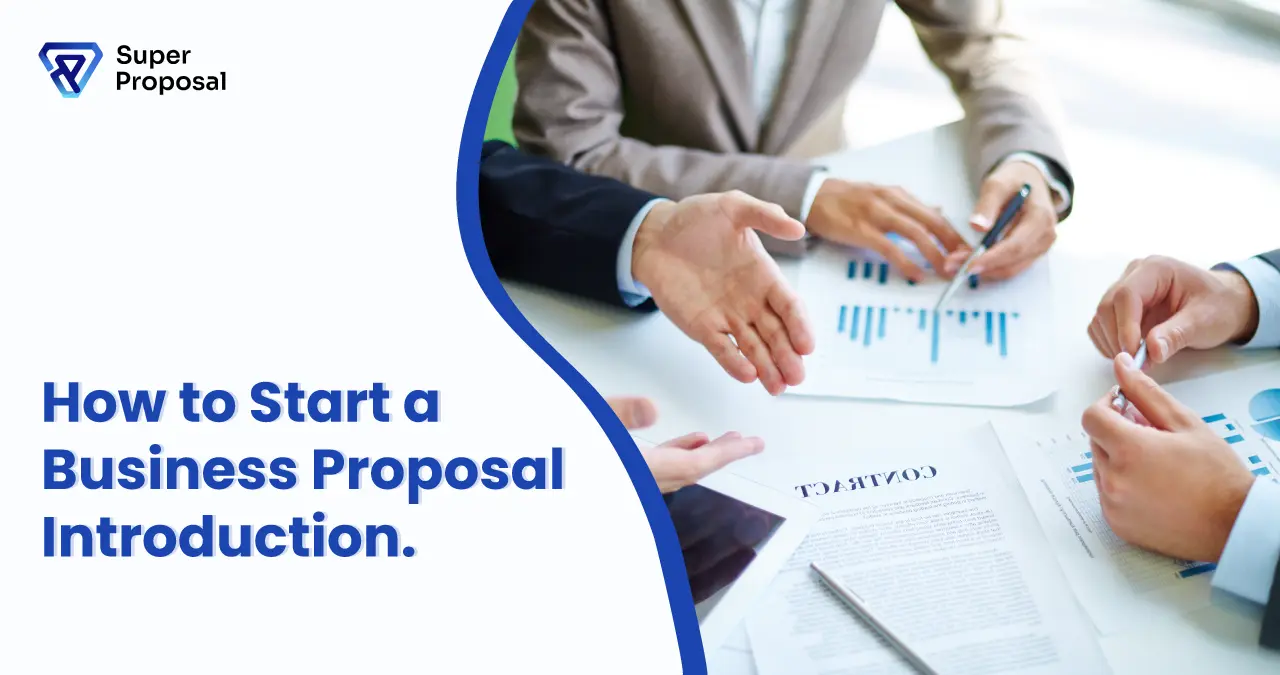
We often hear the phrase, “Don’t judge a book by its cover.” However, in the business world, clients judge your business proposal by its introduction. That makes the introduction an important part of the proposal.
Your proposal introduction should answer essential questions like:
- What is this proposal about?
- Why does this proposal matter?
- Who are the brands we are talking about?
- Which is the main selling point we are showcasing?
The challenge lies in deciding how to start a business proposal introduction. Should it be a formal introduction of the company/agency/individual, or should it focus on the end goal?
This blog will guide you through how to write a business proposal introduction that stands out and how to avoid common mistakes. We’ve included some business introduction samples, too.
Table of Contents
ToggleWhat's a business proposal introduction?
A business proposal introduction is the opening section of a business proposal, which offers a brief yet compelling overview of the proposal’s content.
Starting a business proposal with a crisp overview is crucial because it shows the prospective client that you are a credible source.
The introduction should address the problem your client is facing and give them the solution, which is your product.
For example, the Branding Proposal Template by Super Proposal uses this approach by presenting the issue that the client may or may not be aware of and providing an apt solution to showcase your expertise in your field.
Is it similar to an executive summary? No, my friend, it’s not!
The executive summary and the introduction of your business strategy are two different things. The executive summary provides more detailed information and specifics, while the introduction sets the tone for the rest of the proposal.
How Do You Start an Introduction for a Proposal?
As mentioned earlier, the business proposal introduction decides the future of the proposal. This can make starting it overwhelming. It’s okay to feel stuck. All you need is the right approach to set the tone for success. Try this:
Research
Understand the client’s needs, goals, pain points, and the problem your proposal addresses. Find out ways to personalise the proposal to stand out, show your commitment, and build trust.
Create an outline
Organise your research and thoughts and create an outline for the proposal. Highlight key elements like the problem, your solution, its importance, and your credibility. This way you will have clarity to move forward confidently.
What Should You Include in Your Proposal Introduction?
Many business proposals rely on the introduction to provide a summary and context of the topics covered. This can include details about the project’s goals and objectives and the recipient’s requirements for success. The introduction should also mention any unique terminology used in the proposal, such as acronyms, abbreviations, or industry shorthand.
You can’t miss the following in your introduction:
- Objectives and Goals: Explain how you plan to achieve profitability through strategic pricing, efficient cost management, and targeted marketing efforts.
- Your Business Structure: Explain how your business effectively addresses the market gap by leveraging current trends to meet consumer needs.
- Target Market Briefly describes the market, its location, and the nature and needs of customers that constitute the target.
- Process for Purchasing and Transaction Personalize this session with an example of your business model and how you operate, both online and offline. Refer to the E-commerce SEO Proposal Template for insights on personalization.
- Your USP: Every business in the industry aims to stand out. Your USPs are what will make you different. Conduct proper competitor research and include points to help the client stand out from their primary and secondary competitors.
- Profit Forecast: Suggest a proper profit forecast in the proposal, including start and end dates. Use graphs, tables, and statistics to support your plan. Refer to the Meeting Room Proposal Template to see how to incorporate infographics in proposals. This helps convince the client that you have conducted thorough research and planning.
How to make your business proposal introduction stand out.
Success in the business world comes from hard work—but it can also come from strategic planning. Follow this step-by-step guide to writing the introduction to your business proposal and reach your destination:
Identify the problem or need:
Begin by thoroughly researching the project and the client to understand the issue or opportunity at hand. This effort will help you tailor your proposal to their unique needs.
Tip: It’s you, not me.
No one has the time or desire to read an essay praising your business. Keep reminding yourself that “It’s not about me, but about them.” Write about their challenges and how your skills, knowledge, and strategies can benefit their company. This effort shows your dedication to their project, making it easier to develop a plan tailored to their needs.
Introduce your solution:
Proposal authors often make the mistake of extolling the virtues of their organization without explaining how it benefits or engages the reader.
Format it like this:
- The Problem
- The Solution
- How You Can Make a Difference
Establish credibility:
You need to convince your clients that you can solve their issue. This section serves as social proof, making it significant. Highlight your company’s strengths and the qualifications of your team.
This is where numbers should talk:
- Relevant awards
- Case studies from clients
- Client testimonials
- Industry achievements
Personalize it:
Everyone likes to be addressed by name. Ensure that you refer to the brand or the client directly. A conversational tone can help convey that you’ve done your research and understand their unique challenges.
Keep it Concise:
Save your storytelling skills for the detailed proposal. Make your introduction short, straightforward, and concise. Aim for 3-5 paragraphs or around 250-300 words. Start with a question to engage the reader quickly
Let’s have some examples here:
Pointers | Examples |
Identify the Need or Problem | Struggling with tax returns and filling out endless paperwork? Our XYZ company, with X years of experience, is your perfect solution. Refer to the example from the Accounting Service Template. |
Introduce your Solution | An auditorium in the building will help you organize events by providing proper seating space for all the members in your building. Refer to the example from the Auditorium Template. |
Establish Credibility | By receiving 50+ continuous positive reviews from clients, we are on a journey as a leading catering service in the states. Refer to the example from the Catering Service Template. |
Personalize it | We are impressed with the work you are doing in the XYZ field, and the (Brand Name) is echoing in the industry. Now we would like to help you take that forward with our DVR System Proposal. Refer to the example from the DVR System Proposal. |
Keep it Concise | Fix your short circuits right away with us. Refer to the Electrical Service Proposal Template. |
Business Proposal Introduction Example and Downloadable PDF Templates
To further focus on the principles and structures of a well-crafted business proposal introduction, here are some downloadable Super Proposal templates and examples.
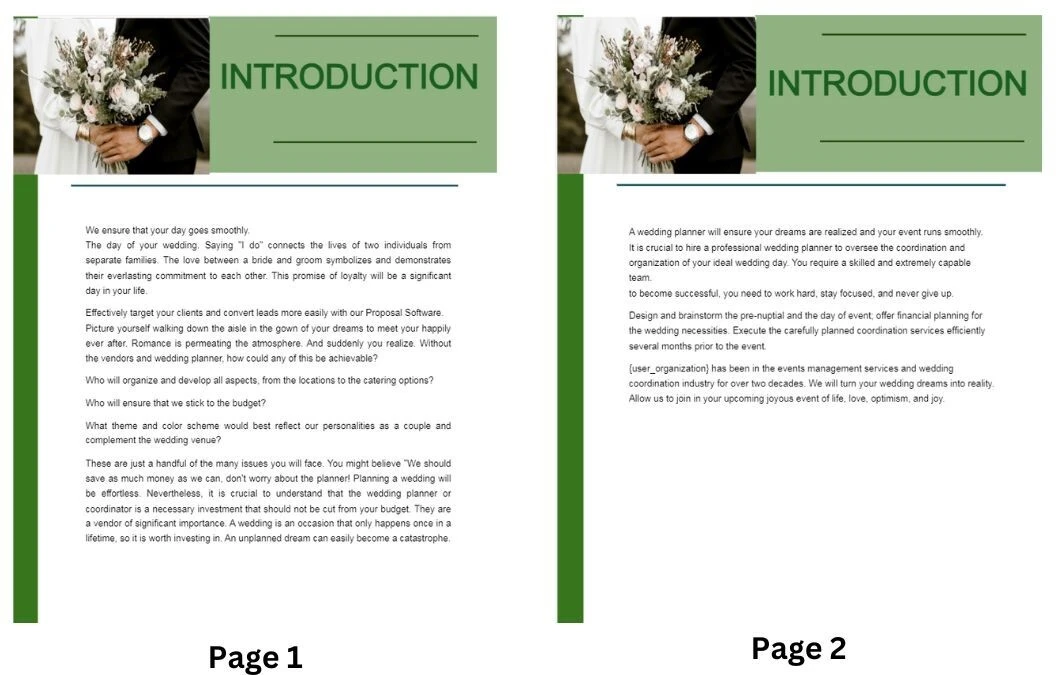
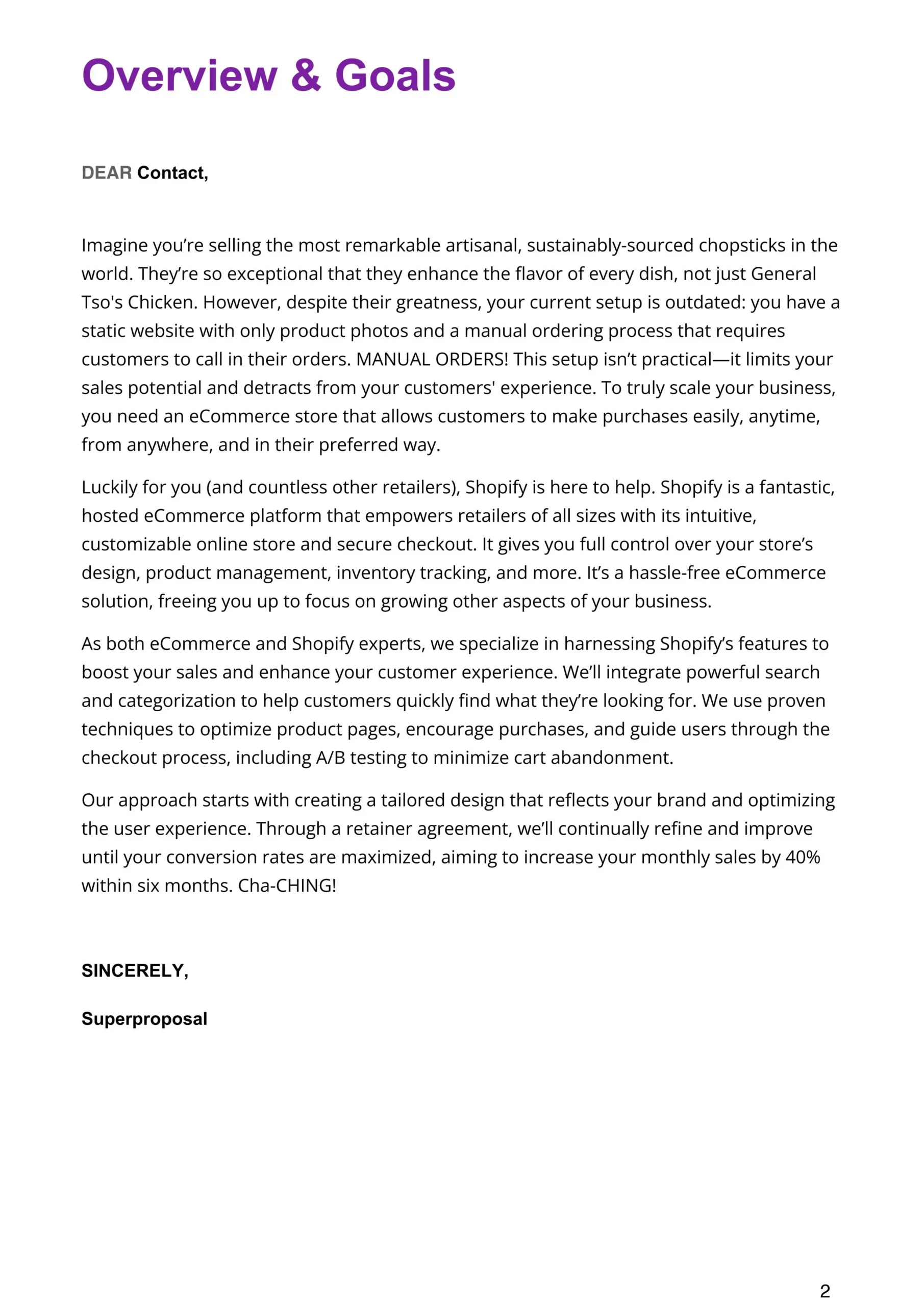
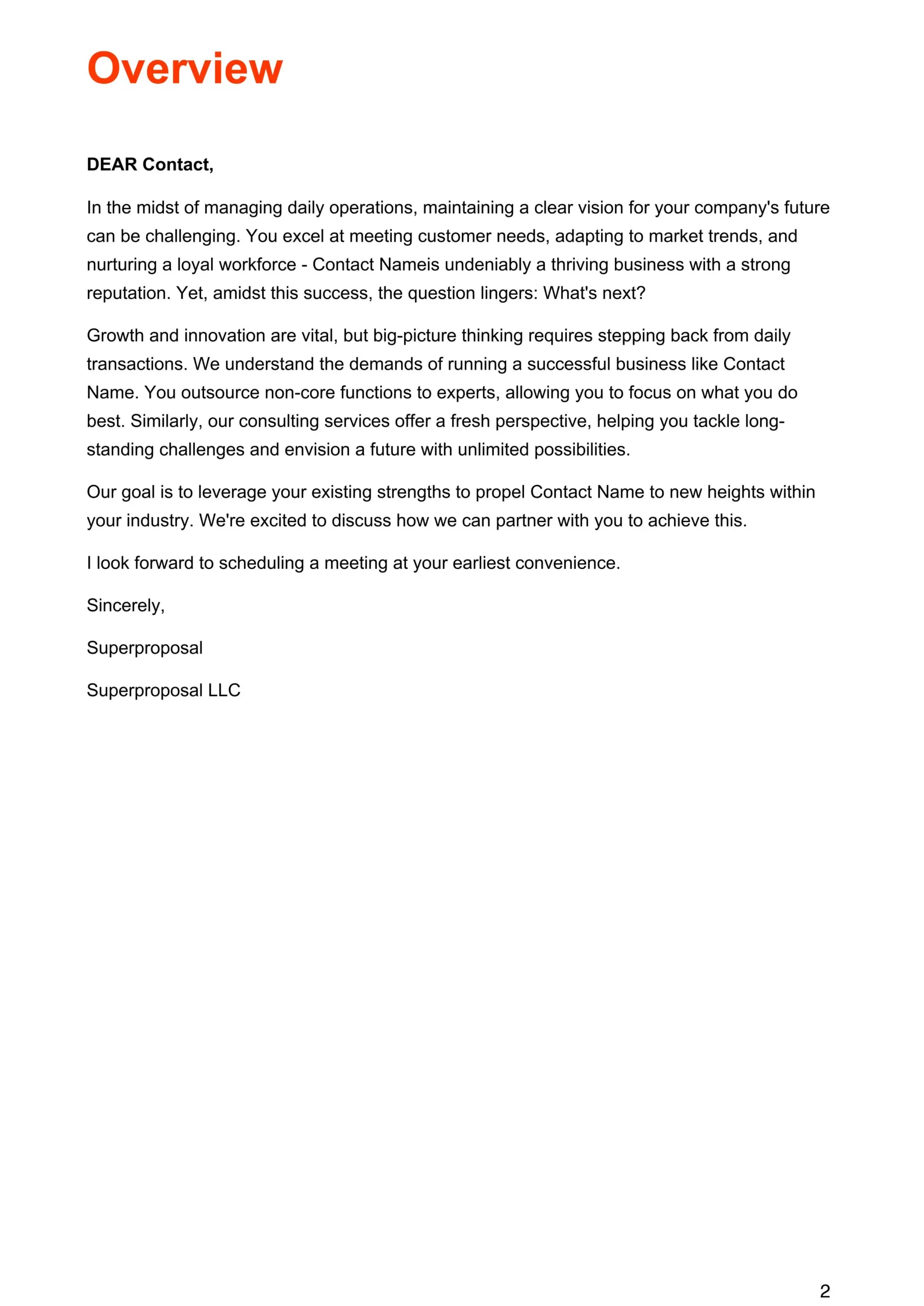
Common Mistakes To Avoid in a Business Proposal Introduction
Since we already covered how to write the perfect Introduction with the must have points now we can explore what we SHOULD NOT do in an introduction.
Not Addressing the Client’s Requirements:
It’s crucial to deeply understand your client’s unique needs and requirements. The product and the brand are the tunnel way to reach your target. Do your proper research to ensure the client needs and where they need your help. When you tailor your proposal to their specific needs, you not only increase your chances of acceptance but also building a stronger relationship based on trust.
Unclear Structure:
No jumping in between or unnecessary promises. Make sure you organize your content logically, using headings and bullet points to guide them through your ideas. A well-structured proposal helps your client quickly grasp your message and keeps them engaged.
Too Much Focus on Yourself:
While it’s important to showcase your expertise, remember that the proposal is about your client. Shift the focus to how your services will directly benefit them. Use examples that demonstrate your understanding of their situation and highlight the unique value you bring to the table.
Not Providing Necessary Details:
Your proposal should include all the essential components: a clear project description, proposed solutions, scope of work, major tasks, project timeline, and budget. Don’t let them have a question about you, instead leave them a question about their own brand.
Providing detailed information helps the client visualize the project and reassures them that you’ve considered all aspects.
Poorly Formatted Proposal:
Presentation matters when it comes to your Proposal. You should make sure your proposal is visually appealing and easy to read. A polished proposal reflects professionalism and makes a positive impression.
Failure to Focus on Value:
What do you bring to the table? Discuss how your unique selling points differentiate you from competitors and solve their specific problems. This approach helps your proposal resonate more deeply with the client.
Not Proofreading:
Read Read and Read one more time. That’s the key to Sucess.
Always take the time to proofread your proposal. Typos and grammatical errors can undermine your professionalism. Utilize grammar-checking tools, but also consider having a colleague review it for a fresh perspective.
Not Writing a Strong Introduction:
The introduction sets the tone for your proposal. Craft a strong, concise introduction that clearly outlines what your proposal covers and why it’s important. Capture your reader’s attention from the start, ensuring they understand the value of reading further.
To wrap up
The components of your business proposal will change depending on the kind of business you are in and what the prospect needs. Prospective customers should have very few questions about your business and what it can do after reading your plan. Everything you need for a great business proposal Introduction is here. Win your client’s business and impress them with a polished, personalized business proposal.
What are you waiting for now that you know how to draft strong business proposals, go get it.
Now it’s time for you to stop writing an ordinary proposal introduction and start creating something extraordinary with Super Proposal’s fully customizable proposal templates.
Read more: Emails For Proposal Submission
Read more: How To Write Project Justification in a Proposal Template
Increase your close rates today!
Secure every pitch that you make with Super Proposal. Craft winning proposals, share and track them on a single, comprehensive platform.
✓ 15-Day Trial. No Credit Card Required.


